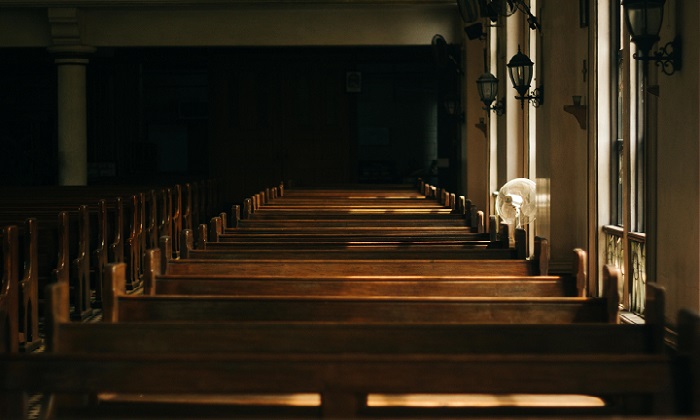When people walk into a church, they come expecting connection—connection with the message, the music, and the community around them. Whether it’s a Sunday sermon, a choir performance, or a youth worship night, sound is at the heart of every worship experience. Yet many congregations are surprised when they realize just how much a proper church sound system costs.
At first glance, it might seem like installing a sound system should be simple: buy some speakers, a microphone, and a mixer, and you’re good to go. But the reality is much more complex. Church sound systems aren’t just equipment purchases—they’re long-term investments in clarity, engagement, and community impact.
Let’s explore why church sound systems often cost more than expected, what makes them different from standard audio setups, and why they’re worth every rupee.
1. The Unique Challenges of Church Acoustics
Unlike a small meeting room or a concert venue designed for audio, churches are often built with high ceilings, reflective surfaces, and large open spaces. These architectural features are beautiful but create significant challenges for sound.
Reverberation: Hard surfaces like marble floors, stained glass windows, and tall ceilings cause sound to bounce and linger, creating echoes.
Uneven Coverage: Some congregants may hear clearly in the front rows, while others in the back struggle with muffled audio.
Multiple Uses: Churches are not just for sermons; they host choirs, live bands, prayer groups, and community events—all with different sound needs.
Addressing these issues requires specialized design, equipment, and installation, which naturally increases costs compared to basic sound systems.
2. Professional-Grade Equipment
Consumer audio equipment might work for a living room, but a church environment requires professional-grade components.
Microphones: From lapel mics for pastors to wireless handhelds for singers, each type has a unique purpose. Professional mics ensure clarity and reduce feedback issues.
Mixers and Digital Consoles: Unlike basic mixers, digital consoles allow for scene recall, EQ adjustment, and integration with live-streaming—critical for today’s hybrid worship.
Speakers and Line Arrays: Instead of simple home speakers, churches often need line arrays or distributed speaker systems to evenly cover the entire congregation.
Monitors and In-Ear Systems: Musicians need clear sound to perform effectively, requiring dedicated monitor systems.
These professional systems are more expensive upfront but designed to handle the scale, durability, and flexibility churches need.
3. Skilled Design and Installation
One of the most underestimated factors in church sound systems is the design and installation process. Simply buying equipment isn’t enough—how it’s placed, tuned, and integrated makes all the difference.
Acoustic Analysis: Professionals use software to map out how sound will travel in the room.
Speaker Placement: Poorly placed speakers can cause dead zones or hot spots where sound is uneven.
Cabling and Infrastructure: Proper wiring ensures reliability and minimizes interference.
System Tuning: After installation, sound engineers fine-tune EQ, delay, and gain settings for optimal performance.
This level of expertise requires both time and specialized knowledge just like AVCore Audio Visual Consultants, which adds to the overall cost. But without it, even expensive equipment can underperform.
4. Long-Term Reliability
A church sound system isn’t a one-time showpiece—it’s used week after week, year after year. This heavy usage demands durable equipment built to last.
Professional gear is designed for longevity, meaning fewer replacements over time.
Warranties, service agreements, and support are often included, providing peace of mind.
Properly installed systems require less frequent troubleshooting, saving frustration and hidden costs.
While the upfront investment may be higher, the total cost of ownership is actually lower in the long run compared to constantly replacing consumer-grade equipment.
5. Integration with Modern Worship Needs
Today’s churches go beyond in-person services. Many now offer live streaming, recording, and online worship experiences. A sound system must integrate seamlessly with these needs:
Audio Feeds for Streaming: Clear sound for online congregations is just as important as for in-person attendees.
Recording Capabilities: Sermons, choirs, and special events are often archived or shared online.
Multimedia Integration: Video presentations, backing tracks, and click tracks require synchronized sound systems.
This level of integration requires additional equipment, software, and expertise—adding to cost but dramatically increasing impact.
6. Training and Ongoing Support
A church sound system is only as good as the people running it. That’s why many installations include training for volunteers and staff.
Sound engineers train church volunteers on basic operation, mixing, and troubleshooting.
Documentation and presets are created so services run smoothly week after week.
Ongoing support agreements ensure help is just a call away when issues arise.
This ongoing investment ensures the system performs consistently, not just on installation day.
7. The Cost of Cutting Corners
It’s tempting for churches to look for cheaper alternatives, but poorly designed systems often lead to:
Frustrated Congregants: People tune out if they can’t hear clearly.
Distracted Worship: Feedback, echoes, or sudden volume changes break immersion.
Higher Costs Later: Fixing a bad system usually costs more than doing it right the first time.
Ultimately, a church’s mission is about reaching hearts and minds. If sound gets in the way of that, the cost is far greater than money—it’s lost impact.
8. Why It’s Worth the Investment
When you think about it, a church sound system is not an expense—it’s an investment in communication, connection, and growth.
A clear sound system ensures the pastor’s message is heard and understood.
Music and worship become more immersive, uplifting the entire congregation.
Online streaming reaches people far beyond the physical walls of the church.
A well-designed system grows with the church, accommodating future needs without constant upgrades.
Every rupee spent contributes to creating an environment where people can fully engage with the service.
Final Thoughts
So, why do church sound systems cost more than you might expect? Because they’re more than just equipment—they’re carefully designed solutions tailored to unique spaces, long-term use, and diverse needs. From professional gear and skilled installation to training and ongoing support, every aspect ensures that worship is delivered with clarity and impact.
According to AV Consultants, investing in a quality sound system is about more than money—it’s about honoring the message and enhancing the worship experience.
And that’s something no congregation can afford to compromise on.


